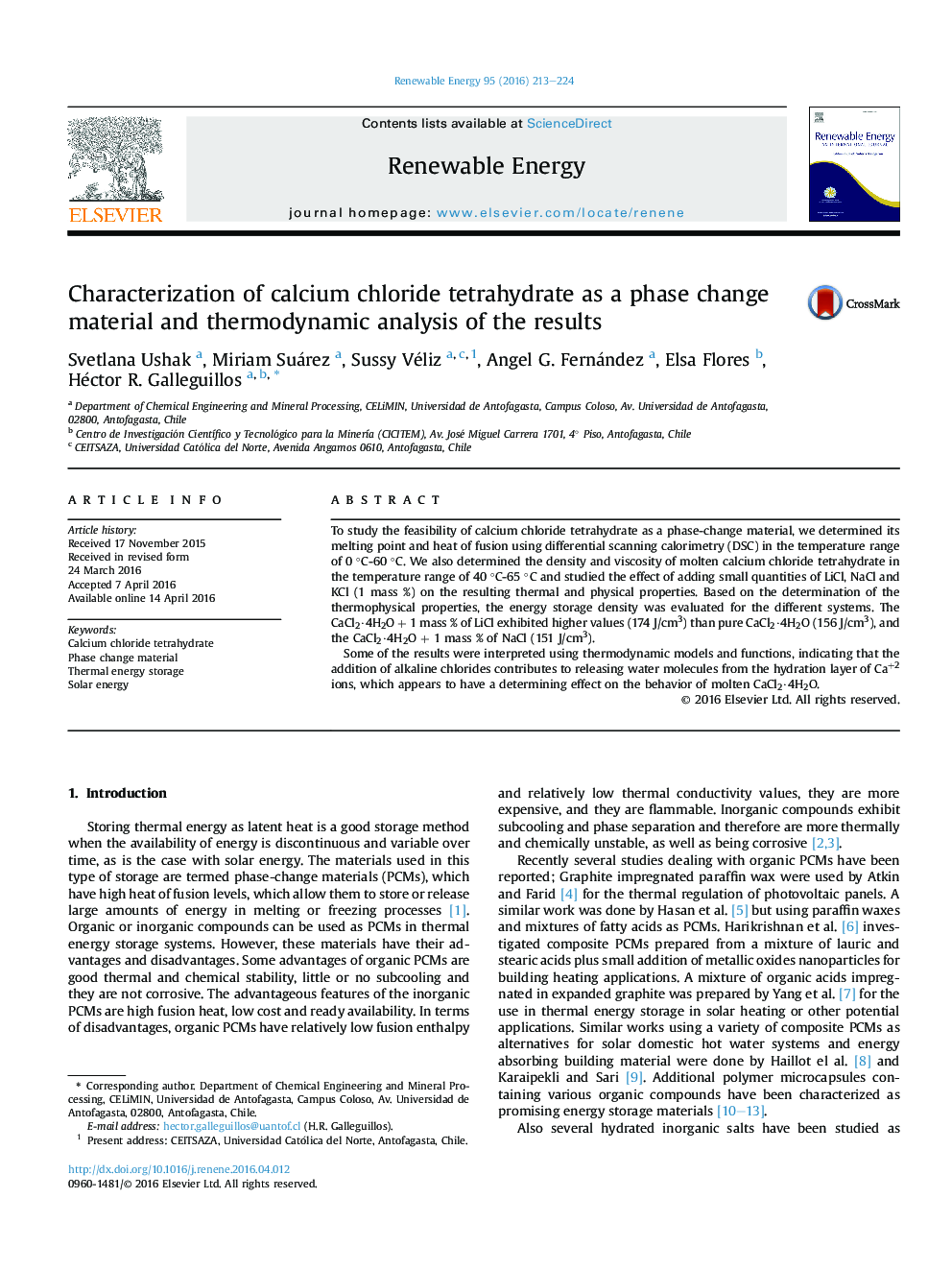| Article ID | Journal | Published Year | Pages | File Type |
|---|---|---|---|---|
| 299694 | Renewable Energy | 2016 | 12 Pages |
•Melting point and heat of fusion of CaCl2·4H2O are 44.2 °C and 99.6 J/g, respectively.•The addition of different alkaline salts to CaCl2·4H2O reduces the melting point.•CaCl2·4H2O + LiCl exhibits a higher energy storage density than pure CaCl2·4H2O.•CaCl2 + 1 mass% of LiCl exhibits a good stability for 15 heating-cooling cycles.•CaCl2 + 1 mass% of LiCl may be a possible alternative for use as a PCM.
To study the feasibility of calcium chloride tetrahydrate as a phase-change material, we determined its melting point and heat of fusion using differential scanning calorimetry (DSC) in the temperature range of 0 °C-60 °C. We also determined the density and viscosity of molten calcium chloride tetrahydrate in the temperature range of 40 °C-65 °C and studied the effect of adding small quantities of LiCl, NaCl and KCl (1 mass %) on the resulting thermal and physical properties. Based on the determination of the thermophysical properties, the energy storage density was evaluated for the different systems. The CaCl2·4H2O + 1 mass % of LiCl exhibited higher values (174 J/cm3) than pure CaCl2·4H2O (156 J/cm3), and the CaCl2·4H2O + 1 mass % of NaCl (151 J/cm3).Some of the results were interpreted using thermodynamic models and functions, indicating that the addition of alkaline chlorides contributes to releasing water molecules from the hydration layer of Ca+2 ions, which appears to have a determining effect on the behavior of molten CaCl2·4H2O.
